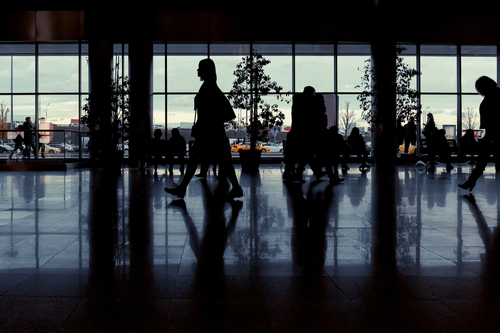This article is only available to Macro Hive subscribers. Sign-up to receive world-class macro analysis with a daily curated newsletter, podcast, original content from award-winning researchers, cross market strategy, equity insights, trade ideas, crypto flow frameworks, academic paper summaries, explanation and analysis of market-moving events, community investor chat room, and more.
We track scheduled flights (what’s planned) and tracked flights (what took off) from a sample of the largest airports across the world.
Looking at data up to 16 January 2023:
- Global departures sit at 104,000 per day, a level comparable to 2019, but shy of the levels they were before Covid-19 struck in 2020 (Chart 1).
- The return to 2019 levels is largely due to China reopening (Beijing: +26.3% WoW; Shanghai: 34.7% WoW). However, with restrictions easing, several countries require tougher Covid-19 measures on Chinese travellers. China retaliated – they halted short-term visas for South Korean and Japanese visitors.
- Despite departures returning to 2019 levels, tourist numbers have not. Only Greece and Italy have seen a normalisation (Chart A). Europe (-5.9% WoW) as a whole, however, has seen departures fall over Q4 (Chart 2). Meanwhile, Japan (27.0%), Hong Kong (5.2%) and Taiwan (9.4%) are laggards in this respect.
Information on long-term movements in flight data is available below.
US
UK
Italy
Spain
Germany
France
Canada
China
Japan
Hong Kong
South Korea
Singapore
Thailand
Bilal Hafeez is the CEO and Head of Research at Macro Hive. He spent over twenty years doing research at big banks – JPMorgan, Deutsche Bank, and Nomura, where he had various “Global Head” roles and did FX, rates and cross-markets research.
Ben Ford is a Researcher at Macro Hive. Ben studied BSc Financial Mathematics at Cardiff University and MSc Finance at Cass Business School, his dissertations were on the tails of GARCH volatility models, and foreign exchange investment strategies during crises, respectively.
(The commentary contained in the above article does not constitute an offer or a solicitation, or a recommendation to implement or liquidate an investment or to carry out any other transaction. It should not be used as a basis for any investment decision or other decision. Any investment decision should be based on appropriate professional advice specific to your needs.)
Enter your email to read this Macro Hive Exclusive
OR
START 30-DAY FREE TRIAL
Already have a Macro Hive Prime account? Log in



















